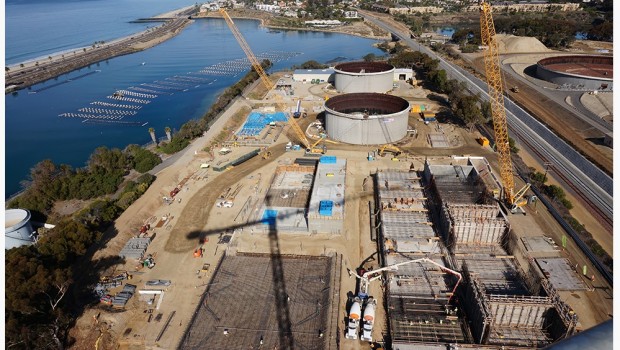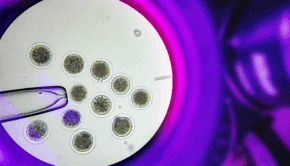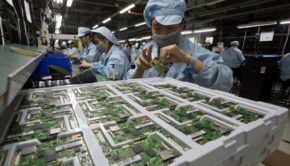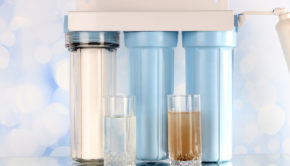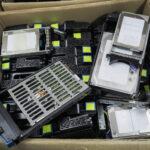Desalination: Will Batteries Do the Trick?
Desalination — the one technology scientists and the public are counting on to save us from the coming blue revolution. Large, fenced-off plants with bulky high pressure pumps. Is this what the future will look like?
According to scientists at the University of Illinois at Urbana-Champaign (UIUC), it doesn’t have to be that way. They recently published a paper exploring battery technology for desalination.
“We are developing a device that will use the materials in batteries to take salt out of water with the smallest amount of energy that we can,” Smith said in a press release. Their concepts are built upon a previously known mechanism in Lithium-ion batteries to filter out sodium (Na) and chloride (Cl), two components of salt, from water.
Can batteries do the trick?
Batteries are used for storing and interconverting chemical to electrical energy, and salt plays an important role in transporting charges. Li-ion batteries, for instance, are filled with an aqueous solution containing lithium salts. Electroactive material in the cathode acts like a sodium source, and materials in the anode are like a sink. Applying an electric field during its charging cycle induces a depletion of salt content in one electrode, accumulating it in the other. This “salt depletion effect” leaves a diluted solution in the anode.
The reverse also happens as li-ion batteries discharge, but Kyle Smith and his colleagues at UIUC engineered an improved design to keep the water desalinated. Their invention, a Na-Ion Desalination device (NID), uses symmetric Na-ion intercalation-electrodes separated by a Na-blocking membrane. The intercalant in the cathode releases Na ions, creating a charge imbalance that attracts the Cl ions from the anode to its electrode. Meanwhile Na ions in the anode enter the intercalant, emptying the solution of both Na and Cl ions.
Smith’s group optimized their battery design by modifying an algorithm previously simulated for suspension flow-batteries. They assessed various parameters, materials, and dimensions for maximized desalination efficiency. Three types of symmetric Na-intercalation cells were simulated using NMO (sodium manganese dioxide) or NTP (sodium titanium phosphate) electroactive material, with a Na-blocking membrane or a non-ion-selective separator.
Results and trade-offs
First, Smith’s team found that a Na-blocking membrane is needed to achieve high degree-of-desalination; unlike a separator, the selective membrane enabled highly concentrated salt solutions to persist in the outlet of the cell without diffusion. The researchers also found that the cells are able to cycle efficiently, with water recovery up to 95%. However, there are cost and energy trade-offs associated with the choice of electroactive material.
When testing for robustness, for instance, the researchers found that energy consumption for the desalination process increased when electron conductivity was reduced by one order of magnitude (e.g. from 100 S/m to 10 S/m). To lower energy usage, a higher kinetic rate-constant k was also required. A high flow velocity and current density can result in rapid production of desalinated water, but they, too, raise energy needs.
Other things to consider are electrode thickness. Thicker electrodes reduce the amount of inactive components, thus cutting down on material costs, but they increase cell polarization, a chemical reaction in which flowing current causes hydrogen bubbles to form on the surface of the electrode. This creates internal resistance in a battery cell and thus limits the degree-of-desalination.
Many of these parameters vary by material, and “understanding the effects on desalination performance will enable the design and operation of low-cost, efficient desalination devices,” the authors wrote.
Opening new doors
Smith hopes to get the desalination job done with the smallest energy possible. The energy requirement of his device is already substantially lower than reverse osmosis, where water needs to be pumped at high pressure into semipermeable membranes to remove the salt content. Battery desalination, on the other hand, only flows water over electrodes, and the flow rate can be adjusted more easily than current desalination technologies.
Other benefits to the Na-ion battery were named, like the device size, which is adaptable to application. Picture a battery connected to a home water system, where sea water may be channeled directly into. Smaller infrastructures, minimal maintenance, and lowered costs. All this and more, it seems, are now on the horizon.
“We believe there’s a lot of promise,” Smith said. He indicated there’s still a lot of work to be done, such seeing how stable the electrolytes will remain and whether a shift in pH due to salt migration will have other effects, but the team is eager to introduce their findings to the research community.
“We’re excited to see what kind of doors this might open,” Smith said.

